Timeline
-
1672
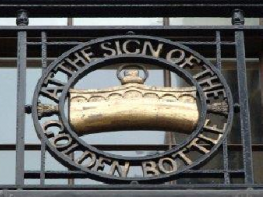 After a seven year apprenticeship, Richard Hoare was made a freeman of the Worshipful Company of Goldsmiths at the sign of the Golden Bottle in Cheapside, and was able to trade on his own account. The following year he bought his former master’s business and soon built up a sizeable trade as a goldsmith/banker. Customers included Charles II’s widow Catherine of Braganza, the diarist Samuel Pepys and the painter Godfrey Kneller, as well as large numbers drawn from the aristocracy and landed gentry.
After a seven year apprenticeship, Richard Hoare was made a freeman of the Worshipful Company of Goldsmiths at the sign of the Golden Bottle in Cheapside, and was able to trade on his own account. The following year he bought his former master’s business and soon built up a sizeable trade as a goldsmith/banker. Customers included Charles II’s widow Catherine of Braganza, the diarist Samuel Pepys and the painter Godfrey Kneller, as well as large numbers drawn from the aristocracy and landed gentry. -
1690
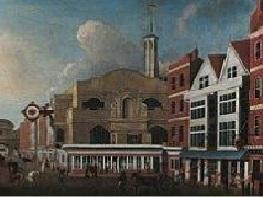 The business moves to Fleet Street, the same site that it still occupies today. The picture shown is an early 18th century view of Fleet Street, attributed to the Circle of Samuel Scott. The bank, on the left hand side, faced the clock which dates from 1871.
The business moves to Fleet Street, the same site that it still occupies today. The picture shown is an early 18th century view of Fleet Street, attributed to the Circle of Samuel Scott. The bank, on the left hand side, faced the clock which dates from 1871. -
1702
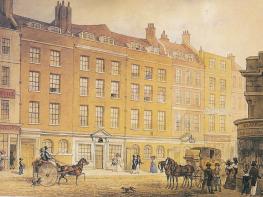 Richard’s son ‘Good Henry’ became a Partner. By then, demand for banking services was beginning to eclipse the goldsmithing business. Richard was knighted by Queen Anne.
Richard’s son ‘Good Henry’ became a Partner. By then, demand for banking services was beginning to eclipse the goldsmithing business. Richard was knighted by Queen Anne. -
1712
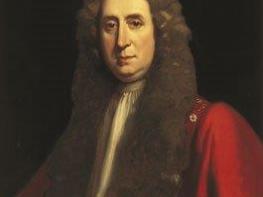 Richard Hoare is elected Lord Mayor of London City. Painted in his mayoral robes, by Jonathan Richardson.
Richard Hoare is elected Lord Mayor of London City. Painted in his mayoral robes, by Jonathan Richardson. -
1717
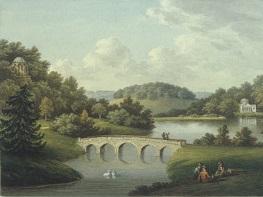 Henry Hoare (Richard’s son) buys Stourhead estate in Wiltshire, thus establishing the Hoare family as country gentlemen. The picture shows a view of Stourhead Garden by John Smith, c.1810-20. After Sir Richard died in 1719, Henry continued to run the bank alongside his younger brother Benjamin.
Henry Hoare (Richard’s son) buys Stourhead estate in Wiltshire, thus establishing the Hoare family as country gentlemen. The picture shows a view of Stourhead Garden by John Smith, c.1810-20. After Sir Richard died in 1719, Henry continued to run the bank alongside his younger brother Benjamin. -
1720
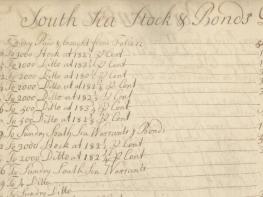 Speculation on the ‘South Sea Bubble’ allowed the bank’s Partners to generate considerable profits for themselves and many of their customers.
Speculation on the ‘South Sea Bubble’ allowed the bank’s Partners to generate considerable profits for themselves and many of their customers. -
1725
 Henry’s son, Henry ‘The Magnificent’, became Partner at the age of only 19 and remained one until his death 60 years later. Much of his leisure time was dedicated to Stourhead, and in particular to the creation of its famous gardens, now one of the National Trust’s most visited attractions. The senior clerk, Christopher Arnold, became the first of only two non-family Partners in the bank’s history.
Henry’s son, Henry ‘The Magnificent’, became Partner at the age of only 19 and remained one until his death 60 years later. Much of his leisure time was dedicated to Stourhead, and in particular to the creation of its famous gardens, now one of the National Trust’s most visited attractions. The senior clerk, Christopher Arnold, became the first of only two non-family Partners in the bank’s history. -
1731
 Henry the Magnificent’s brother, Richard, was made Partner. As Lord Mayor of London in 1745-46, Sir Richard (he was knighted in 1745) was involved in controversial plans to demolish the houses on London Bridge and was also responsible for defending London during the second Jacobite uprising.
Henry the Magnificent’s brother, Richard, was made Partner. As Lord Mayor of London in 1745-46, Sir Richard (he was knighted in 1745) was involved in controversial plans to demolish the houses on London Bridge and was also responsible for defending London during the second Jacobite uprising. -
1763
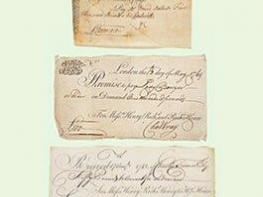 Early ‘Messrs Hoare & Co’ printed cheque dated 4th March 1763.
Early ‘Messrs Hoare & Co’ printed cheque dated 4th March 1763. -
1777
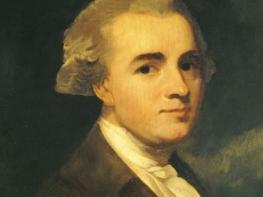 Henry of Mitcham was made Partner. Initially not expected to live long, he went on to dominate the bank for the next 50 years. His strict management of the bank’s affairs during the unsteady period of the American and Continental Wars saw deposits treble from £781,000 to £2,216,000.
Henry of Mitcham was made Partner. Initially not expected to live long, he went on to dominate the bank for the next 50 years. His strict management of the bank’s affairs during the unsteady period of the American and Continental Wars saw deposits treble from £781,000 to £2,216,000. -
1785
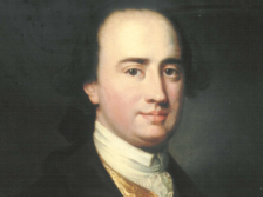 Henry the Magnificent died. His nephew, Richard of Barn Elms, became Senior Partner at the bank, while Stourhead passed to Henry’s grandson, Richard Colt Hoare, on condition that he left the bank.
Henry the Magnificent died. His nephew, Richard of Barn Elms, became Senior Partner at the bank, while Stourhead passed to Henry’s grandson, Richard Colt Hoare, on condition that he left the bank. -
1799
 Charles Hoare, who gave his name to C. Hoare & Co., engaged John Nash and Humphrey Repton to design Luscombe Castle in South Devon. Sir David Hoare, a former Chairman, continues to live there.
Charles Hoare, who gave his name to C. Hoare & Co., engaged John Nash and Humphrey Repton to design Luscombe Castle in South Devon. Sir David Hoare, a former Chairman, continues to live there. -
1826
 Private banks lost their monopoly on deposit banking with the decision to allow the formation of joint-stock banks. Many were sold or converted into joint-stock banks but Hoare’s retained its independence.
Private banks lost their monopoly on deposit banking with the decision to allow the formation of joint-stock banks. Many were sold or converted into joint-stock banks but Hoare’s retained its independence. -
1828
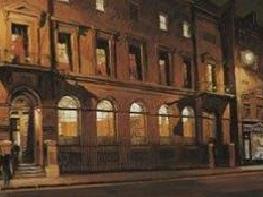 A new banking house, designed by architect Charles Parker (a former pupil of Jeffry Wyatville), is erected on Fleet Street at a cost of £21,000. The image above is a painting by James Hart Dyke in 2001. In addition to the Partners’ Private House, there was accommodation for 6 of the 14 clerks. By this time, the bank was issuing cheque books and washing books, the forerunner of statements.
A new banking house, designed by architect Charles Parker (a former pupil of Jeffry Wyatville), is erected on Fleet Street at a cost of £21,000. The image above is a painting by James Hart Dyke in 2001. In addition to the Partners’ Private House, there was accommodation for 6 of the 14 clerks. By this time, the bank was issuing cheque books and washing books, the forerunner of statements. -
1852
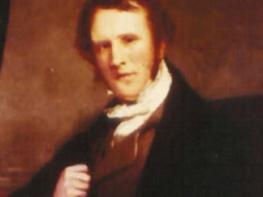 Peter and Henry of Staplehurst entered into a new partnership agreement. Brothers-in-law by marriage, they disliked each other intensely and fell out over religious issues. Despite contriving to meet as seldom as possible, their 14 year partnership was successful in banking terms with deposits reaching £2,515,000.
Peter and Henry of Staplehurst entered into a new partnership agreement. Brothers-in-law by marriage, they disliked each other intensely and fell out over religious issues. Despite contriving to meet as seldom as possible, their 14 year partnership was successful in banking terms with deposits reaching £2,515,000. -
1866
 Peter’s son in law, Algernon Strickland, entered the partnership. He brought a steadying influence to the bank during a calamitous period which saw the sons of both Henry and Peter burdening the business with debt and scandal.
Peter’s son in law, Algernon Strickland, entered the partnership. He brought a steadying influence to the bank during a calamitous period which saw the sons of both Henry and Peter burdening the business with debt and scandal. -
1891
 The bank publishes its balance sheet for the first time. The Partners add their own personal capital to strengthen the bank's position. Twenty clerks are employed on salaries ranging from £100 to £150.
The bank publishes its balance sheet for the first time. The Partners add their own personal capital to strengthen the bank's position. Twenty clerks are employed on salaries ranging from £100 to £150. -
1897
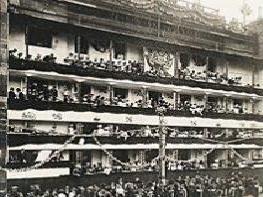 Temporary balconies are erected to allow staff and customers to view Queen Victoria's Diamond Jubilee procession.
Temporary balconies are erected to allow staff and customers to view Queen Victoria's Diamond Jubilee procession. -
1909
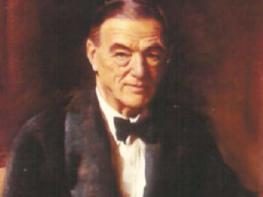 Henry of Iden’s son, Harry of Ellisfield, became the Senior Partner of the 8th generation and oversaw a period of retrenchment.
Henry of Iden’s son, Harry of Ellisfield, became the Senior Partner of the 8th generation and oversaw a period of retrenchment. -
1923
 There is still only one typewriter on the premises. Customer ledgers continue to be written up by hand until 1962. The picture shows a clerk searching the shelves for ledgers, dating back to 1673, which were kept in the ‘Books’ department.
There is still only one typewriter on the premises. Customer ledgers continue to be written up by hand until 1962. The picture shows a clerk searching the shelves for ledgers, dating back to 1673, which were kept in the ‘Books’ department. -
1929
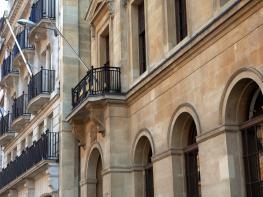 The Partners converted the bank into a private unlimited liability company, C. Hoare & Co. Deposits were at the same level as they had been in 1852.
The Partners converted the bank into a private unlimited liability company, C. Hoare & Co. Deposits were at the same level as they had been in 1852. -
1939
 Most banking operations and staff are evacuated to Ovington Park, Hampshire. In May 1941, the Fleet Street premises were caught up in a bombing raid. The resulting fires were bravely extinguished by the household staff, led by Bertram Hoare, using water from the bank’s artesian well.
Most banking operations and staff are evacuated to Ovington Park, Hampshire. In May 1941, the Fleet Street premises were caught up in a bombing raid. The resulting fires were bravely extinguished by the household staff, led by Bertram Hoare, using water from the bank’s artesian well. -
1959
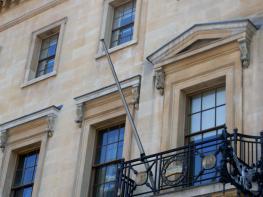 Henry Cadogan became the first of the 10th generation of Partners. Deposits had climbed to £9,034,000 and staff levels stood at just over 100.
Henry Cadogan became the first of the 10th generation of Partners. Deposits had climbed to £9,034,000 and staff levels stood at just over 100. -
1961
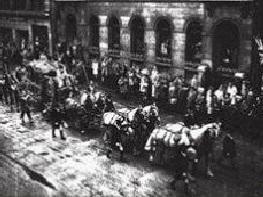 Sir Derick Hoare becomes the third Partner to serve as Lord Mayor of London. The image shows the Lord Mayor's coach passing in front of 37 Fleet Street.
Sir Derick Hoare becomes the third Partner to serve as Lord Mayor of London. The image shows the Lord Mayor's coach passing in front of 37 Fleet Street. -
1972
 The bank celebrates its tercentenary by issuing a silver bonbon dish to bank customers.
The bank celebrates its tercentenary by issuing a silver bonbon dish to bank customers. -
1996
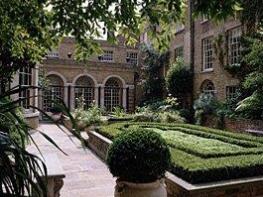 The courtyard garden at Fleet Street was redesigned by Georgia Langton in the early 1990s. The garden is filled with trees and shrubs and neatly clipped box hedges. An oasis in the heart of London. Venetia Hoare became the first female Partner.
The courtyard garden at Fleet Street was redesigned by Georgia Langton in the early 1990s. The garden is filled with trees and shrubs and neatly clipped box hedges. An oasis in the heart of London. Venetia Hoare became the first female Partner. -
2000
 The C. Hoare & Co. website was launched. The following year the first online statements were rolled out, marking the beginning of the bank’s electronic services.
The C. Hoare & Co. website was launched. The following year the first online statements were rolled out, marking the beginning of the bank’s electronic services. -
2005
 The bank celebrates its third of a millennium. The bank hosted a performance of Mary Poppins at the Prince Edward theatre for customers. A specially designed umbrella was created to mark the occasion.
The bank celebrates its third of a millennium. The bank hosted a performance of Mary Poppins at the Prince Edward theatre for customers. A specially designed umbrella was created to mark the occasion. -
2006
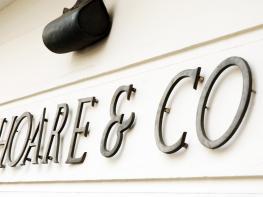 The bank appointed its first non-family Chairman.
The bank appointed its first non-family Chairman. -
Present
 Today the 10th and 11th generations continue the tradition laid down by their predecessors, playing an active role in all aspects of the bank. The bank employs nearly 400 staff and has a balance sheet of approximately £2.8 billion.
Today the 10th and 11th generations continue the tradition laid down by their predecessors, playing an active role in all aspects of the bank. The bank employs nearly 400 staff and has a balance sheet of approximately £2.8 billion.

